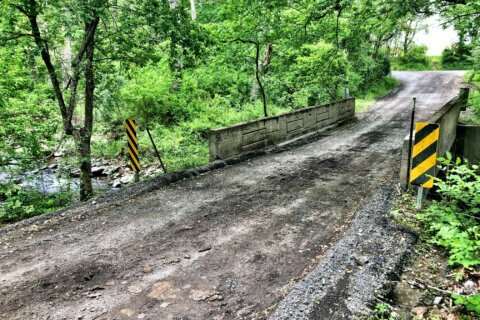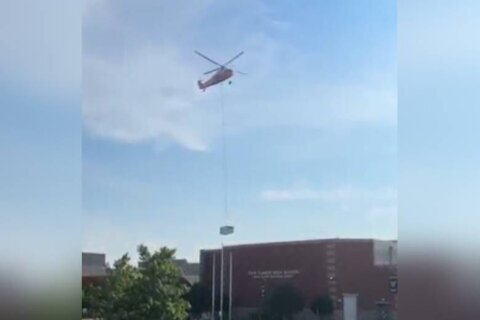Starting next week, the Environmental Protection Agency will begin removing contaminated soil from the Hidden Lane Landfill Superfund site in Sterling, Virginia.
The excavation is scheduled to start Feb. 20, the agency said in a news release.
The site has been on the agency’s national priorities list since 2008, Remedial Project Manager Austin Oelschlager said.
In the next phase, the agency will work to excavate soil contaminated by trichloroethylene (TCE), which is a known carcinogen that was used to clean metal parts. The focus area is the base of the landfill, Oelschlager said, and the contaminated soil will be disposed of away from the site.
The step will allow the agency to then “further remediate the groundwater contamination at the site.” It comes after years of work to determine the type and extent of contamination, and create a plan to address it.
When the site was discovered in the early 2000s, Oelschlager said some of the homes in the nearby Broad Run Farms community had TCE in their drinking water.
The excavation is a step toward ensuring the contaminated groundwater source is safe.
“A lot of (residents) have been living there for a really long time,” Oelschlager said. “So we’re finally happy to be able to take this first step, and do the cleanup and first remove the source area, and then remediate the groundwater, so that the residents don’t have to be impacted by contamination in their drinking water in the future.”
The EPA has sampled the private drinking water wells close to the site, and installed treatment systems for wells that were found to have been contaminated. Currently, about 40 properties are being treated with that system, and the agency is also connecting a public waterline to over 100 properties to make sure the drinking water is safe.
Once the waterline is installed, it is supposed to eliminate any potential TCE exposure in the groundwater for drinking water purposes.
The waterline project is expected to start later this year, and Oelschlager said the excavation is projected to be finished by the fall.
After the contaminated soil is removed, the agency will start a process to clean the TCE that’s in the groundwater. That process, though, takes several years, Oelschlager said.
“This is a really exciting time for EPA and for the community,” Oelschlager said.
The site has received funding from the Bipartisan Infrastructure Law, according to a news release.
“We’re thrilled to begin this next step in the remediation process and bring this site one step closer to being a clean and safe asset for the community,” said Paul Leonard, EPA Mid-Atlantic Region Superfund and Emergency Management Division.
Get breaking news and daily headlines delivered to your email inbox by signing up here.
© 2024 WTOP. All Rights Reserved. This website is not intended for users located within the European Economic Area.








